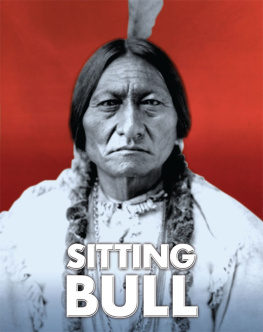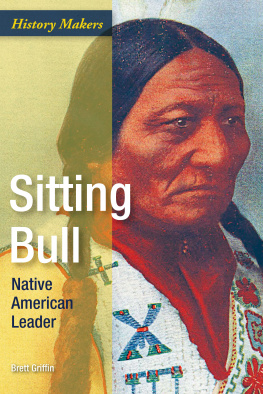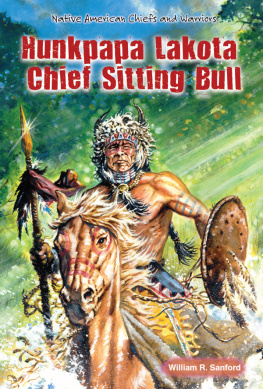Who Was Sitting Bull?
By Stephanie Spinner
Illustrated by Jim Eldridge
Penguin Workshop
To my sister, WendySS
PENGUIN WORKSHOP
An Imprint of Penguin Random House LLC, New York
Penguin supports copyright. Copyright fuels creativity, encourages diverse voices, promotes free speech, and creates a vibrant culture. Thank you for buying an authorized edition of this book and for complying with copyright laws by not reproducing, scanning, or distributing any part of it in any form without permission. You are supporting writers and allowing Penguin to continue to publish books for every reader.
The publisher does not have any control over and does not assume any responsibility for author or third-party websites or their content.
Text copyright 2014 by Stephanie Spinner. Illustrations copyright 2014 by Penguin Random House LLC. All rights reserved. Published by Penguin Workshop, an imprint of Penguin Random House LLC, New York. PENGUIN and PENGUIN WORKSHOP are trademarks of Penguin Books Ltd. WHO HQ & Design is a registered trademark of Penguin Random House LLC. Printed in the USA.
Visit us online at www.penguinrandomhouse.com.
Library of Congress Control Number: 2014958193
Ebook ISBN 9780698187306
Version_2
Contents
Who Was Sitting Bull?
When Sitting Bull was ten years old, he went on his first buffalo hunt. He was the only boy in a group of skilled warriors. He had made his bow and arrows himself and used them on birds, rabbits, and other small game. But he had never hunted buffalo.
Buffalo provided food and clothing for the tribe. Their hides were made into tepees. They were more valuable to the Lakota Sioux than any other animal. And they were hugesometimes two thousand pounds. When the hunters started to chase the herd, causing a stampede, Sitting Bull watched carefully. Then he found a young buffalo, raced after it on his pony, and brought it down with two shots from his bow.
When the hunters returned home and divided up their kill, Sitting Bull gave his buffalo to a family that had very little to eat. He did the same thing on his next hunt and on many more after that. The Lakota prized generosity, but it was unusual in such a young boy.
Sitting Bull grew up to be a great chief. He led many American Indian tribes in the long, hard fight to keep their land and their ways of life. Generous to the last, he gave everything he had to help his people.
Chapter 1
Slow
Sitting Bull was named Jumping Badger when he was born in the spring of 1831, in South Dakota. His father, a chief of the Hunkpapa Sioux, was very happy to have a son in the family. Jumping Badger proved to be an unusual childvery quiet and very watchful.
When he was a toddler, Jumping Badger never grabbed at anything he was offered, even food. Instead, he would look it over intently before taking it. When he was asked a question, he thought carefully about the answer. Because he never did anything quickly, his mother and two sisters stopped calling him Jumping Badger. They called him Slow instead.
Slow learned to ride a pony when he was three or four. A year or two later, his father gave him his first bow and arrow. They were small, but they worked, and Slow was soon using them to hunt rabbits, squirrels, and birds. Before long, he made his own weapons.
Like other young boys in the tribe, Slow looked forward to hunting buffalo. The huge, lumbering creatures were all-important to the Hunkpapa, who ate buffalo meat and used buffalo hides for tepees, blankets, and clothing. They made spoons and cups out of buffalo horns, strung their bows with buffalo tendons, and made war paint with buffalo fat and colored powder. The buffalo gave them almost everything they needed, and for this, they were grateful. They prayed to a buffalo god and used a buffalo skull in religious ceremonies.
And they considered a boys first buffalo hunt to be very important. It was his first step to manhood.
When Slow went on his first buffalo hunt, there were a dozen warriors in the hunting party, including his father and two uncles. Slow wanted to make them proud.
The hunters rode across the plains until they found a herd. Then they began to chase it. Hundreds of buffalo stampeded, raising thick, blinding clouds of dust. The earth shook. The noise of the animals was deafening. Slow calmly found a young buffalo in the herd, chased it, and killed it with two shots from his bow.
Back at camp, he gave the meat to a family that needed food. The boys kind deed made his father proud. Generosity was one of four qualities the Sioux admired most. The others were strength, wisdom, and bravery.

THE GREAT SIOUX NATION
IN THE 1830S, THE SIOUX, CALLED THE GREAT SIOUX NATION, WERE THE MOST POWERFUL AMERICAN INDIANS ON THE GREAT PLAINS. THEIR TERRITORY WAS VAST, ABOUT HALF A MILLION SQUARE MILES THAT STRETCHED FROM THE MISSOURI RIVER IN THE EAST TO THE YELLOWSTONE RIVER IN THE WEST, AND SOUTH FROM THE NORTH PLATTE RIVER ALL THE WAY UP TO CANADA. THE SIOUX TRAVELED OVER THEIR LAND FOR MOST OF THE YEAR, FOLLOWING HERDS OF BUFFALO.
THE SIOUX NATION WAS MADE UP OF THREE MAIN GROUPS: THE LAKOTA, THE DAKOTA, AND THE NAKOTA. THEY SPOKE THE SAME LANGUAGE (WITH SMALL DIFFERENCES) AND WORSHIPPED THE SAME GREAT SPIRIT CALLED WAKAN TANKA. EACH GROUP INCLUDED SEVERAL BRANCHES, OR TRIBES.
SITTING BULLS FAMILY BELONGED TO ONE OF THE SEVEN LAKOTA TRIBES, THE HUNKPAPA. THE OTHER LAKOTA WERE THE BLACKFEET, THE BRUL, THE MINICONJOU, THE OGLALA, THE SANS ARC, AND THE TWO KETTLES.
THE TRIBES OF THE GREAT SIOUX NATION WERE FRIENDLY TO ONE ANOTHER. THEY LIVED APART, BUT WOULD SOMETIMES BAND TOGETHER TO HUNT. WHEN IT WAS NECESSARY, THEY FOUGHT TOGETHER AGAINST A COMMON ENEMY.
Chapter 2
Sitting Bull
Young Sioux boys spent a lot of time playing. They held footraces and pony races. They had shooting contests with their bows and arrows. They played tag and wrestled. They ambushed one another. Their games were a lot of fun, but they had a serious purpose, too. They were trainingfor the hunt and for war.















